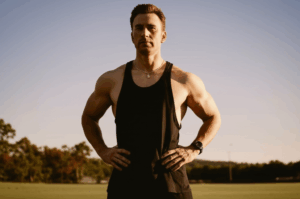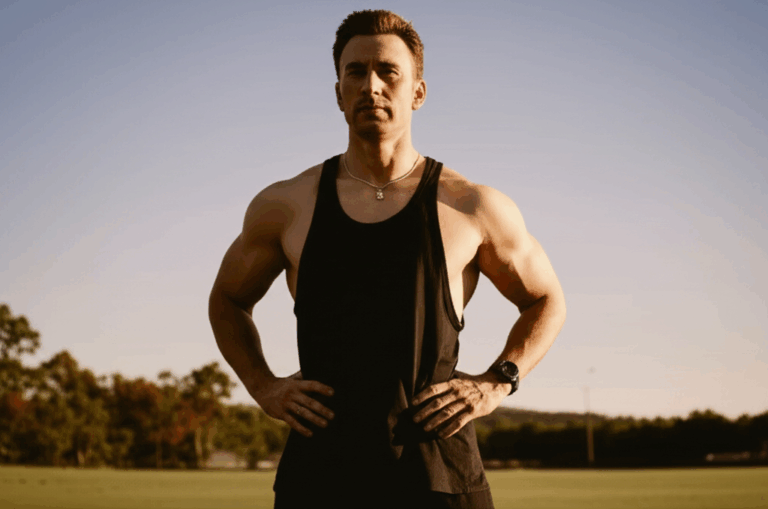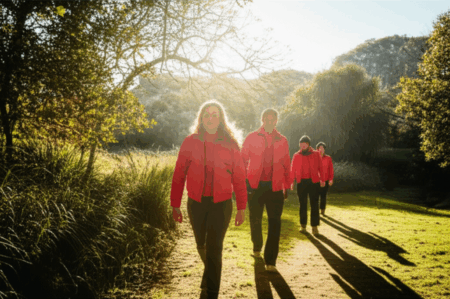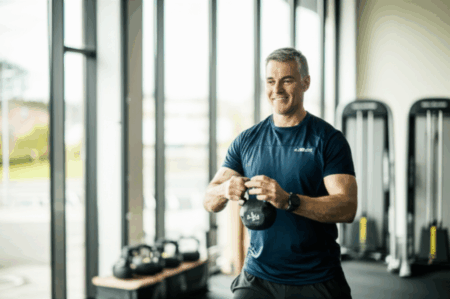When Chris Evans stepped into the role of Captain America, he underwent a physical transformation that became as iconic as the character itself. Moving beyond simply “looking good,” Evans, with the help of world-class personal trainer Simon Waterson, built a physique that was not only muscular but also athletic, agile, and capable of embodying a super-soldier. This comprehensive guide delves into the rigorous workout routine and disciplined diet plan that sculpted the actor into one of Marvel’s most beloved heroes.
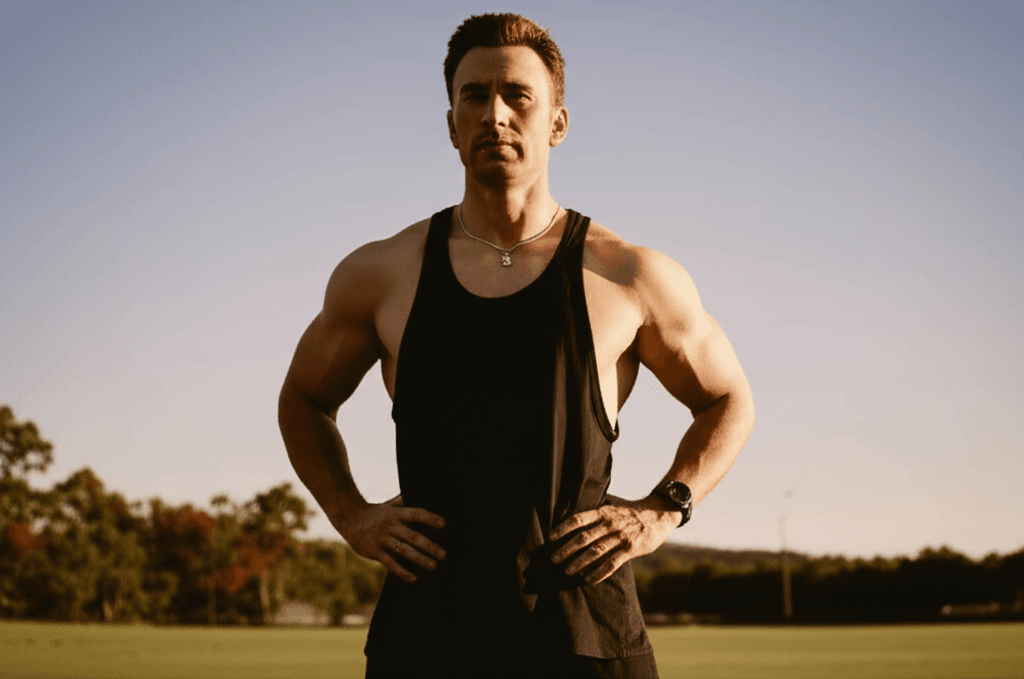
The Philosophy Behind the Physique: Strength, Function, and Proportion
Chris Evans’s training for Captain America wasn’t just about bulking up; it was about creating a balanced, functional, and powerful physique. Trainer Simon Waterson emphasized a “performance-style training” approach, focusing on exercises that built real-world strength and athleticism, rather than just aesthetics.
Key principles of his training philosophy included:
- Heavy Weight, Low Reps: Unlike many actors who focus on high-volume training, Evans’s regimen incorporated lower rep ranges with heavier weights to elicit a significant muscle-building response.
- Compound Exercises: The foundation of his workouts revolved around compound movements like squats, deadlifts, presses, and rows, which engage multiple muscle groups simultaneously for maximum efficiency and strength gains.
- Functional Training: To ensure Captain America could move like an athlete, Evans incorporated bodyweight exercises, plyometrics (like squat-to-box jumps), medicine ball work, and even gymnastics to improve flexibility, explosiveness, and agility.
- V-Taper Focus: A significant emphasis was placed on developing a wide back, prominent shoulders (deltoids), and a strong chest to create the classic “V-taper” silhouette, characteristic of a superhero physique.
- Balanced Body: Waterson ensured a balanced physique, addressing muscles on both the front and back of the body, which Evans admitted was a new concept to him initially.
The goal was to increase Evans’s weight while simultaneously reducing his body fat, a challenging feat that saw him go from approximately 77kg to 82kg, and drop his body fat percentage from 12.5% to a lean 8%.
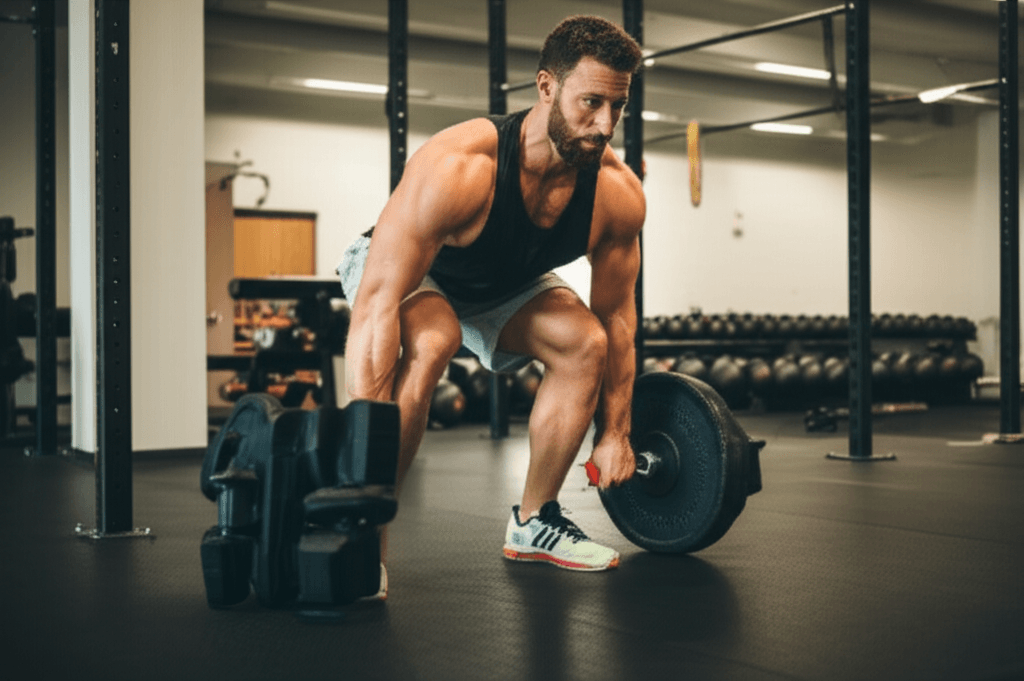
The Workout Regimen: A 5-6 Day Split
Chris Evans’s workout schedule was intense, typically involving 5 to 6 training days per week, often focusing on two major muscle groups per session for about two hours. Rest and recovery days were crucial for muscle repair and growth.
While specific routines varied for each film, a general outline of his Captain America-inspired workout split often looked like this:
Day One: Lower Body & Explosiveness
This day focused on building powerful legs and enhancing athletic explosiveness.
- Squats: 3 sets of 5 reps
- Deadlifts: 3 sets of 5 reps
- Lunges: 2-3 sets of 6-8 reps per leg
- Jump Squats: 2 sets of 12 reps
- Box Jumps: 2 sets of 10 reps
- Lying Leg Curls: 2 sets of 12 reps
- Standing Machine Calf Raises: 2 sets of 15 reps
- Hyperextension: 3 sets of 10-12 reps
- Cable Woodchoppers: 3 sets of 10-15 reps per side (for core and rotational power)
Day Two: Upper Body (Chest & Back Focus)
This session targeted major upper body muscle groups to build the Captain America aesthetic.
- Incline Dumbbell Press: 3 sets of 5 reps
- Military Press (machine preferred by Evans): 3 sets of 5 reps
- Weighted Pull-ups / Pull-ups: 3-4 sets of 4-12 reps
- Bent Over Row: 3 sets of 5 reps
- Inverted Rows: 3 sets of 12 reps
- Z Press: 3 sets of 8 reps
- Push-ups (sometimes weighted): 3 sets of 12 reps
- Seated Cable Row (wide-grip): 3 sets of 6-8 reps
- Lat Pulldown: 3 sets of 8-10 reps
Day Three: Rest & Recovery
This day was dedicated to rest, allowing muscles to recover and grow. Mobility exercises like stretching or yoga were encouraged.
Day Four: Upper Body (Shoulders & Arms Focus)
To further develop the “V-taper” and impressive arms, this day honed in on specific upper body areas.
- Seated Dumbbell Press: 3 sets of 6-8 reps
- Side Delt Raises: 3 sets of 10-12 reps
- Rear Delt Raises (cables): 2-3 sets of 10-12 reps
- Barbell Curls: 3-4 sets of 8-10 reps
- Overhead Tricep Rope Extensions / Skull Crushers: 3-4 sets of 8-10 reps
- Dips (weighted): 3 sets of 12-15 reps
- Preacher Curls: 5 sets of 6-12 reps
- One-Arm Cable Pushdowns: 5 sets of 6-12 reps
Day Five: Core & Functional Movement
Core strength was paramount for Cap’s athleticism.
- Cable Crunches: 3-4 sets of 10-12 reps
- Planks: 3 sets of 30 seconds
- Sit-ups / Weighted Crunches: 3 sets of 10-15 reps
- Bicycle Crunches: 3 sets of 15 reps
- Lying Floor Leg Raises: 3 sets of 15 reps
- Gymnastics / Acrobatics: Incorporating various bodyweight and dynamic movements to enhance agility and control.
Day Six & Seven: Active Recovery or Weak Points
These days could be used for additional active recovery (e.g., light cardio like LISS, yoga, stretching) or to target specific “weak points” that needed extra attention for the screen.
Throughout the training, rest periods were strictly observed: 2-3 minutes between sets for heavy, low-rep exercises, and 60-90 seconds for higher-rep movements.

The Nutritional Blueprint: Fueling the Super-Soldier
Chris Evans’s diet was as disciplined as his training, meticulously designed to support muscle growth while preventing fat accumulation. His trainer, Simon Waterson, emphasized that the biggest challenge was consuming enough calories to build muscle without storing excess energy as fat.
The diet adhered to simple yet effective principles:
- High Protein Intake: Essential for muscle repair and growth, lean protein sources were consumed throughout the day. Evans aimed for 0.8-1 gram of protein per pound of body weight.
- Lean Protein Sources: Chicken breast, fish, lean beef, and ground turkey were staples.
- Complex Carbohydrates: Provided sustained energy for intense workouts. Sources included brown basmati rice, porridge/oatmeal, and fruits.
- Healthy Fats: Crucial for hormone production and overall health, primarily sourced from olive oil and nuts.
- Frequent Meals: Evans consumed numerous clean meals per day (reportedly up to 8), totaling around 3,000-3,500 calories, a strategic increase from his maintenance levels to promote slow, steady muscle gain without fat.
- Strategic Snacking: Low-carb protein shakes, fruits, and nuts served as healthy snacks between meals.
A Sample Day of Eating for Chris Evans:
- Breakfast: Bowl of porridge (oatmeal) with dark berries and walnuts.
- Morning Snack: Whey-based protein shake and 5g Branched-Chain Amino Acids (BCAAs).
- Pre-Workout Snack: Apple and almonds.
- Post-Workout Snack: Whey-based protein shake and 5g BCAAs.
- Lunch: Chicken salad with brown basmati rice and olive oil.
- Afternoon Snack: Protein shake.
- Dinner: Lean protein (fish, chicken, or lean beef) with mixed vegetables and olive oil.
- Before Bedtime: Casein protein shake (for slow-digesting protein overnight).
Supplementation
To further support his intense training and strict diet, Evans incorporated several key supplements:
- Whey Protein: For quick post-workout recovery and between-meal protein boosts.
- Casein Protein: A slow-digesting protein, consumed before bedtime to provide a steady release of amino acids overnight.
- Branched-Chain Amino Acids (BCAAs): Taken to minimize muscle breakdown and aid muscle growth.
- Glutamine: Used to support muscle recovery and prevent muscle burning for energy.
- Omega-3, 6, and 9 Fatty Acids: For overall health, inflammation reduction, and fighting harmful free radicals.
Chris Evans’s journey to becoming Captain America was a testament to consistent effort, a scientifically backed training program, and a highly disciplined nutritional approach. It highlights that achieving a “superhero physique” is a holistic endeavor, demanding dedication to both rigorous exercise and meticulous diet.


